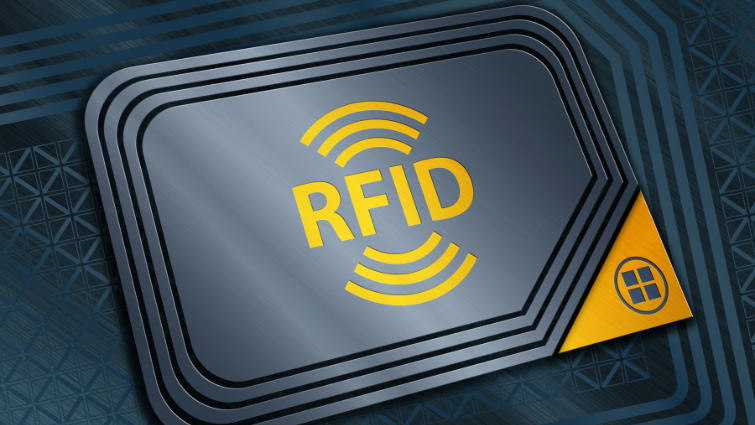
There is an emerging threat of unknowingly scanning and stealing card information without physical contact. This is known as an RFID cyberthreat, which targets those with RFID-card-equipped holders. Here, ‘RFID’ refers to Radio Frequency Identification, an impressive technology that has revolutionized the way we track and identify objects.
To prevent this threat and reduce its occurrences worldwide, RFID wallets have emerged as more than just a fashion statement.
These wallets are compact, portable, and, most importantly, secure—crafted to shield your RFID-enabled cards from unauthorized scans and financial theft.
In this guide, we will learn about how RFID wallet technology works and how it helps prevent identity theft.
Understanding RFID Wallet
So, what is RFID wallet in simple words. It is a bulwark against unauthorized automatic scanning. It helps prevent electronic pickpocketing. It prevent transmission of electronic chip card information to unknown system.
For lifestyle people, it’s more than fashion statement and being a reliable companion for its owner as it protect their financial cards from thieving.
Materials used in RFID wallets are carbon fiber and aluminum. These materials are renowned for their durability and strength. They are highly effective in blocking electromagnetic interference.
These wallet are now transforming and getting stronger in capabilities. You may have seen best RFID blocking wallet with airtag which makes these wallets little extra impressive.
This feature is not chosen merely but intended to provide extra layer of security for piece of mind when traveling and having safe transaction experience.
- RFID wallets are handy, compact, and fashion trendy.
- These wallets prevent unauthorized scan (not done by owner).
- With Airtag, it becomes easier to track and quickly find when lost.
Let’s understand how RFID wallet technology works in reality.
How RFID Wallet Works?
Most modern credit cards, debit cards, passports, and ID cards have RFID chips. These cards are primarily used for contactless payments, enabling convenient shopping and lifestyles.
RFID-blocking wallets are designed to prevent unwanted RFID scanning by using a special shielding material (carbon fiber and aluminum) to prevent RFID signals from reaching the cards inside.
Check this example to understand in real-time manner.
- RFID skimmers emit signals to activate the chip in your card.
- Your RFID wallet absorbs or deflects these signals, preventing the card from responding.
- Since no response is sent, the skimmer cannot steal any data from your card.
In this manner it prevents happening of financial theft and motivates you to keep your cards inside the wallets worry-free.
But, you must know when to use these wallets. Isn’t it?
Carry RFID wallets while traveling in crowded places like airports or public transport. In locations where contactless payments are widely used, or if you have multiple RFID-enabled cards and want to avoid accidental double scanning.
How Does It Prevent Identity Theft?
An RFID wallet’s core component does the work to protect your cards and you from fraud or identity theft. Understand below how these wallets are helpful in protecting your sensitive information.
1. Blocks RFID Skimming
You might not be aware of the tricks and dirty methods scammers use. A widely recorded method is the use of RFID skimmers to wirelessly capture personal data from your credit cards, passports, or IDs.
An RFID wallet creates a shield that blocks these signals, making it impossible for a skimmer to read your card’s details.
2. Prevents Unwanted Transactions
In crowded or public places, you can’t identify the hackers. Therefore, some hackers attempt contactless payment fraud by using scanners to trick your card in these locations.
RFID wallets stop these attacks by preventing the scanner from establishing a connection with your card.
3. Protects Personal Information on IDs
Modern passports and driver’s licenses store sensitive data like your name, date of birth, nationality, and passport number. Without protection, cybercriminals can steal this information and use it for identity fraud.
4. Reduces the Risk of Financial Fraud
Stolen credit card data can be used for online purchases, card cloning, or account takeovers. These practices are much in demand and widely used by scammers. An RFID wallet helps ensure that your card information remains private and secure.
Core Technologies of RFID Wallets
These wallets incorporate RFID blocking technologies to protect card information from unauthorized scanning. Two primary technologies are used in RFID wallets:
1. Passive RFID Blocking Technology
This technology works straightforwardly by absorbing or deflecting RFID signals quickly.
2. Active RFID Blocking Technology
This technology is one step ahead because it emits an interfering signal and disrupts communication and transmission.
In addition to this context, incorporating high-tech gadgets such as AirTags into RFID wallets further enhances security. There are various RFID wallets with AirTag compatibility available from different brands, offering an upgrade from traditional wallet use.
Comparing RFID Wallets With Traditional Wallets
| Feature | RFID Wallet | Traditional Wallet |
|---|---|---|
| Security | Electromagnetic shielding against RFID skimming | Easier for skimmer to attempt RFID scan |
| Material | Carbon fiber or aluminum in addition to leather | Leather, fabric, or other common wallet materials |
| Price | Expensive than traditional wallet | Starts from budget-friendly price |
Conclusion
Radio Frequency Identification (RFID) wallet technology is designed to protect your credit cards, debit cards, and ID cards from unauthorized RFID scanning.
With this information, you might feel confident and aware of how RFID wallets work and the technologies that power them.
Ultimately, in the face of increasing cybercrime attempts, you should consider owning an RFID wallet to protect your cards and lifestyle.

Author Bio:
Micah James is a seasoned tech and mobile app blogger at The Next Tech, known for his in-depth research and insightful analysis. He covers the latest trends in technology, app innovations, and digital advancements.